- LRL Home
- State Government
- Minnesota Capitols
Minnesota Capitols and other Legislative Session Locations
Compiled by the Minnesota Legislative Reference Library
Since territorial times, where has the Legislature convened? There have been three state capitol buildings in Minnesota's history, but the House or Senate has met in regular or special session in ten buildings. Three were official capitol buildings and the remainder were short-term locations.
Capitol buildings
- First Capitol building: January 4, 1854 - March 1, 1881
- Second Capitol building: January 2, 1883 – April 21, 1903
- Third Capitol building: January 3, 1905 – Present
A detailed timeline
September 3, 1849 - November 1, 1849
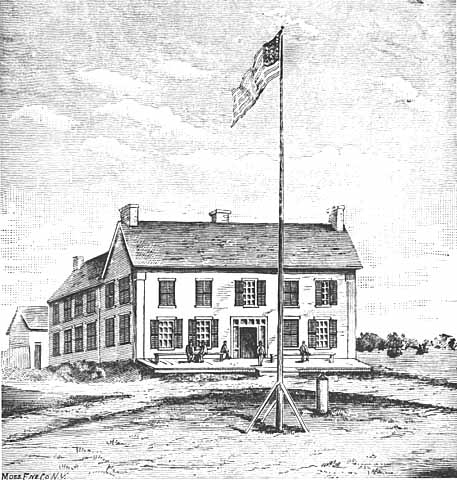
1st Territorial Legislature
The makeshift, first territorial session location was the Central House Hotel in St. Paul, where the 18 members of the House waited to convene until the breakfast dishes were cleared from the dining room. Upstairs, the nine new Council members moved their desks aside each evening to make way for cots and mattresses.
Location: NE corner of Minnesota Street and Bench Street (which was also Second Street). Bench Street extended along the Mississippi River bluff between Third Street and the river.
January 1, 1851 - March 31, 1851
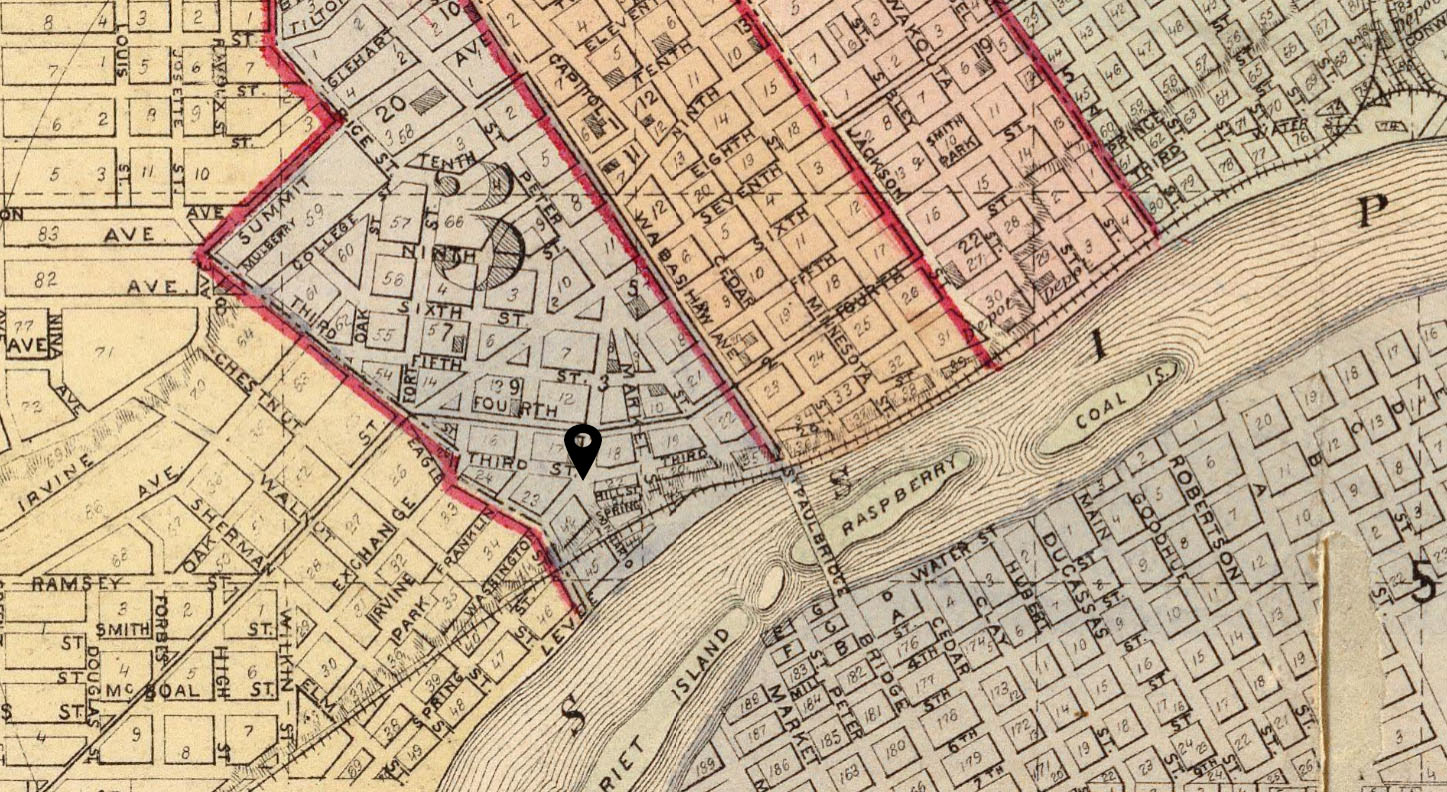 2nd Territorial Legislature
2nd Territorial Legislature
Legislators met in a three-story brick building, the Rice & Banfil Building (also known as Rice House), just completed, on the site where the well-known Metropolitan Hotel would later stand. The Rice & Banfil Building burned down in the winter of 1856-7.
Legislators dealt with building a capitol right away. Chapter 2 of the 1851 laws stated, "The Capitol or Public Buildings for the sessions of the Legislative Assembly...shall be erected at a central point in the Town of St. Paul." By fall, bids were requested by the Board of Commissioners for Public Buildings for two important buildings, both for $40,000 -- the Capitol Building in St. Paul and the Territorial Prison in Stillwater.
Location: St. Anthony Street (which was also Third Street), between Washington and Franklin. The map pictured here is Plan of the City of St. Paul by A. T. Andreas in 1874 in the David Rumsey Map Colllection.
January 7, 1852 - March 6, 1852
 3rd Territorial Legislature
3rd Territorial Legislature
This temporary location was in a commercial brick building known as the Goodrich Building, since it was built by Judge Goodrich. This was later the site of the Merchants Hotel.
Location: On Third Street, below Jackson. The map pictured here is Plan of the City of St. Paul by A. T. Andreas in 1874 in the David Rumsey Map Colllection.
January 5, 1853 - March 5, 1853
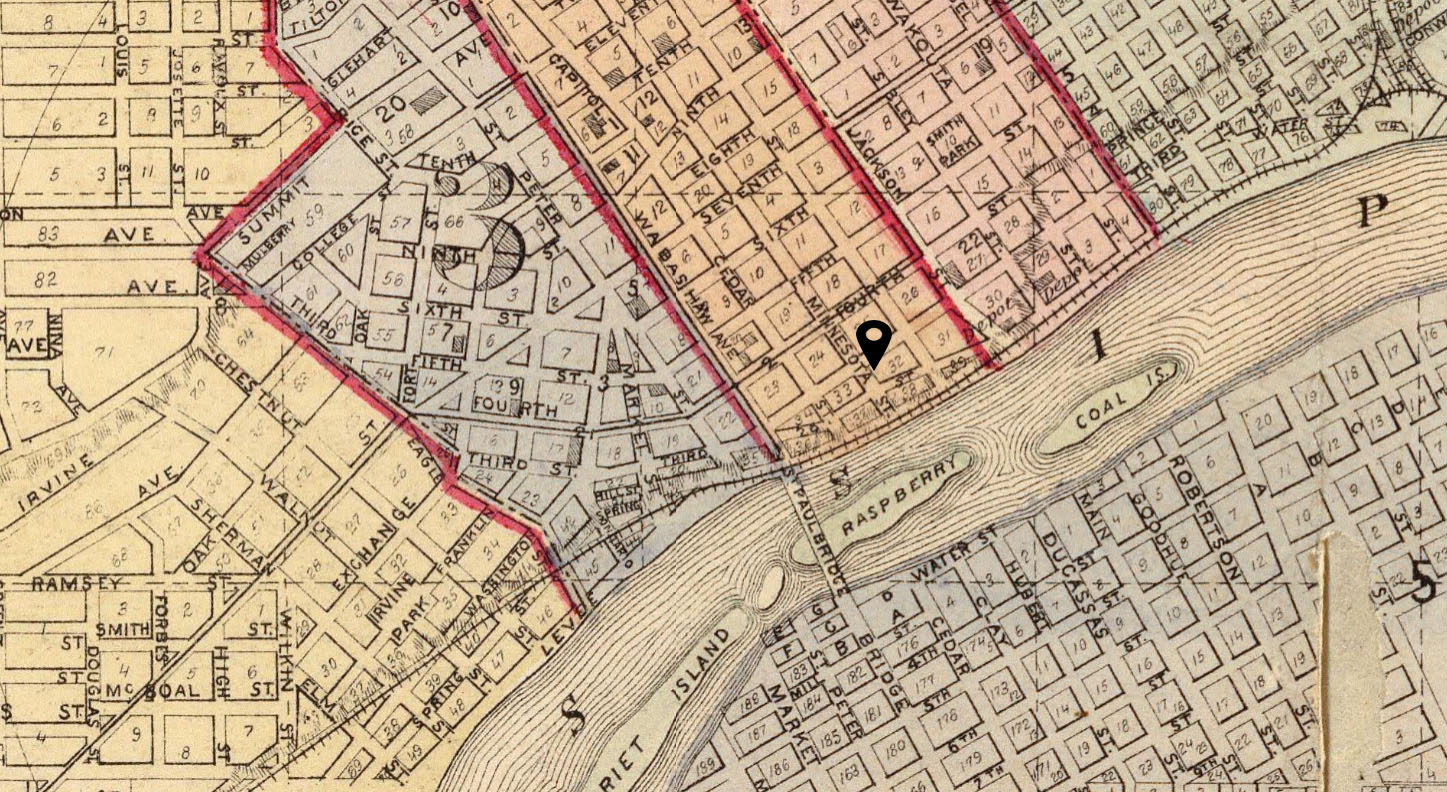 4th Territorial Legislature
4th Territorial Legislature
The last temporary location before the first Capitol was built was a two-story brick building, the Chouteau building, on the Corner of Third and Minnesota Streets.
January 4, 1854 - March 1, 1881
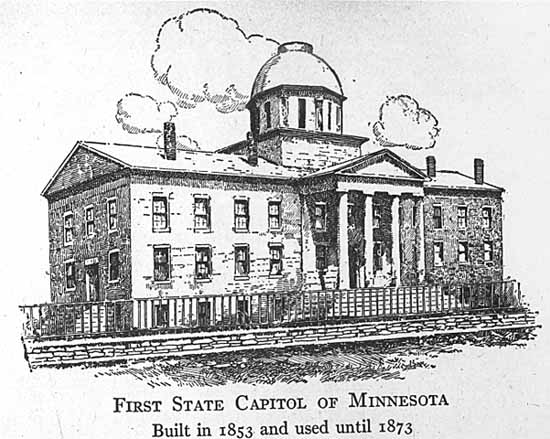
5th Territorial Legislature - 22nd Legislature
Capitol #1
The fifth legislature of the territory met in Minnesota's first capitol building. The chambers were lit by candles and heated by box iron stoves, large enough to hold four-foot logs. Even so, the temperature could drop almost to zero.
The first capitol was designed by N.C. Prentiss and stood at 10th and Exchange Streets, between Cedar and Wabasha. The land was donated to the territory by Charles Bazille on June 27, 1851. Building operations commenced within a month, and it was completed in 1853, for $31,222.65. The original structure, designed by N.C. Prentiss, underwent two expansions in the 1870s and was restyled in the Italianate mode by Abraham Radcliffe. See images of the first state capitol in its original form and its expansion from the Minnesota Historical Society.
President Millard Fillmore visited the new capitol visited the capitol shortly after it was built.
In 1857, a bill was passed to move the capitol of Minnesota from St. Paul to St. Peter. However, the bill was not delivered on time and did not become law. St. Paul remained the capitol city.
The capitol was destroyed by fire on March 1, 1881, while both bodies were in session. It was reported in the Minneapolis Tribune on Wednesday, March 2, that everyone survived. In the House, "Men, usually calm, dashed wildly about the room, a thousand terrible fancies flashing through their brains." In the Senate, "Brave men blanched with fear," as they looked for escape routes. ""Someone should move to adjourn," shouted the Secretary, and Senator Crooks made the motion, which was put and responded to with an unanimity of sentiment not usually encountered." In the end, "the dome was a great beacon of light, spreading a lurid glare over the entire city."
Location: 10th and Exchange Streets between Cedar and Wabasha
March 2, 1881 - November 19, 1881
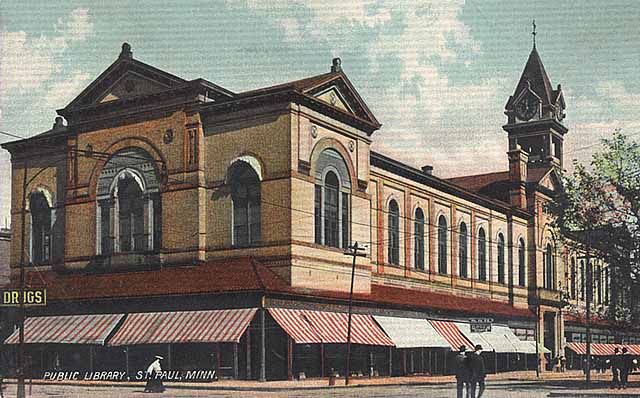
22nd Legislature
By 11 am on the day following the fire, the Legislature met in the Market House, a commercial building designed by Abraham Radcliffe, the same architect who designed additions to the now-destroyed capitol building. This photo shows the building with its distinctive clock tower later, in 1908, when it housed the St. Paul Public Library.
Location: Between Wabasha and St. Peter on West 7th Street
January 2, 1883 - April 21, 1903

23rd Legislature - 33rd Legislature
Capitol #2
Early on, the second capitol building suffered from poor ventilation and lack of space for committee hearings. By April 1893 a bill was passed to construct the next capitol building (Chapter 2, 1893). After the new capitol opened in 1905, the former capitol was used for state offices until it was torn down in 1938.
See images of the exterior of the second state capitol and the interior of the second state capitol from the Minnesota Historical Society.
Location: 10th and Exchange Streets between Cedar and Wabasha
January 3, 1905 - Present
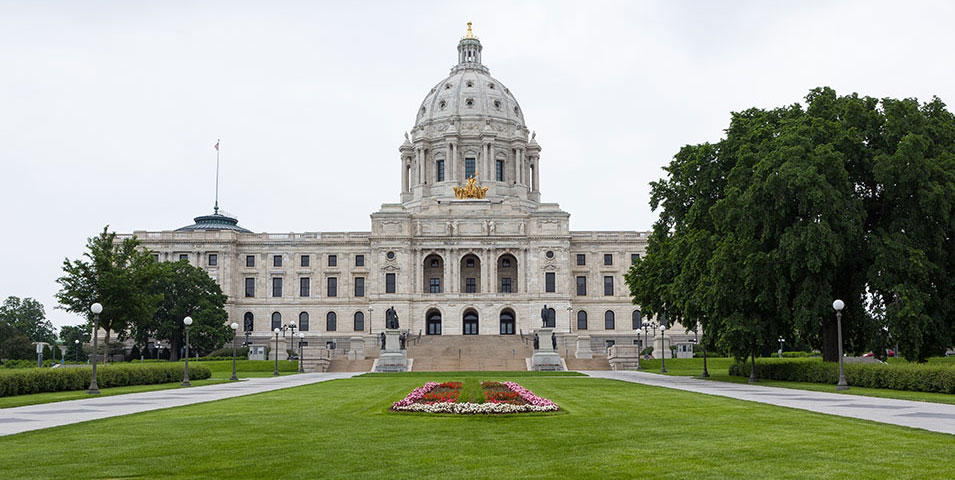
34th Legislature - present (with a few exceptions, see below)
Capitol #3
Ground was broken on the site (which cost $367,161.98) on May 6, 1896 for the present day Capitol, the third state capitol. The cornerstone was laid on July 27, 1898 and the building opened in January of 1905. The total cost was $4,458,628.27. Read a detailed architectural history, or see images of the exterior of the third state capitol and the interior of the third state capitol from the Minnesota Historical Society.
At least a few U.S. presidents visited Minnesota's third Capitol building. On November 3, 1949, President Harry S. Truman visited the Minnesota state Capitol. On September 16, 1952, President Dwight D. Eisenhower addressed a crowd from the steps of the state Capitol.
After the third capitol was finished in 1905, there were four times when the legislature held floor sessions outside of their ordinary spaces: the 1st special session in the fall of 1989, the 1st special session in June of 2015, the regular session in 2016, and during the 2020 COVID-19 pandemic. In 1989, the capitol underwent a remodeling project, but the major restoration project started in July of 2013 and completed in January of 2017. During the restoration project, the legislature was often able to use their own chambers for session proceedings. The legislative chambers remained open during the 2014 and 2015 regular sessions. The grand re-opening celebration for the restoration was held in August of 2017. See more details below.
Location: 75 Rev. Martin Luther King Jr. Boulevard
September 27, 1989 - September 29, 1989
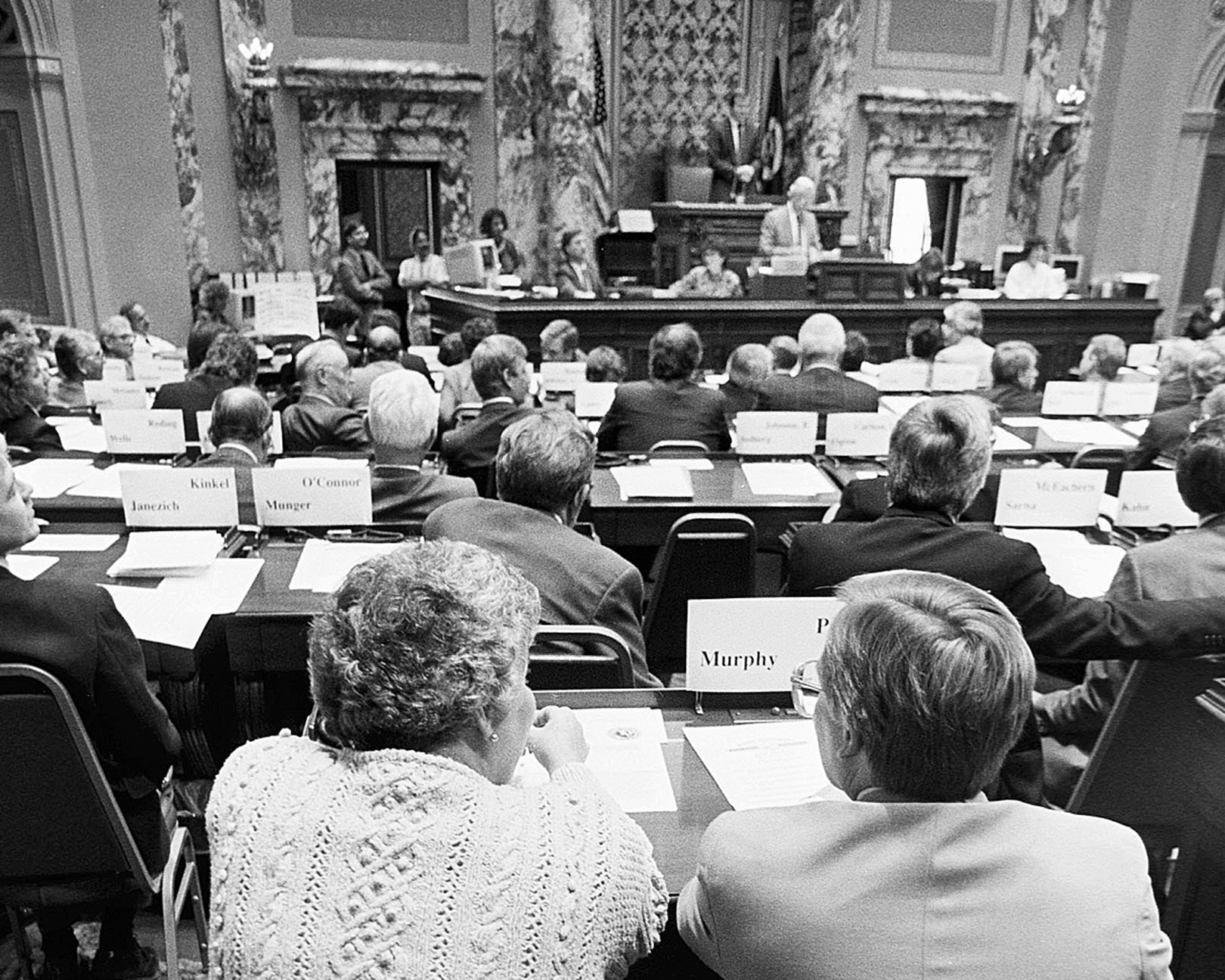 76th Legislature
76th Legislature
In 1989, during a special session in September, the House Chamber was in the process of remodeling, so the House and Senate each met in the Senate Chamber.
The Senate chamber had been remodeled the year before in 1988, but it did not impact the legislative session.
See Perspectives, p. 3 or "So what makes a special session so special?" in Session Daily for photos. The image seen here of House members meeting for session in the Senate chamber is copyrighted by Minnesota House of Representatives. House Photography file photo.
Location: 75 Rev. Martin Luther King Jr. Boulevard
June 12, 2015 - June 13, 2015
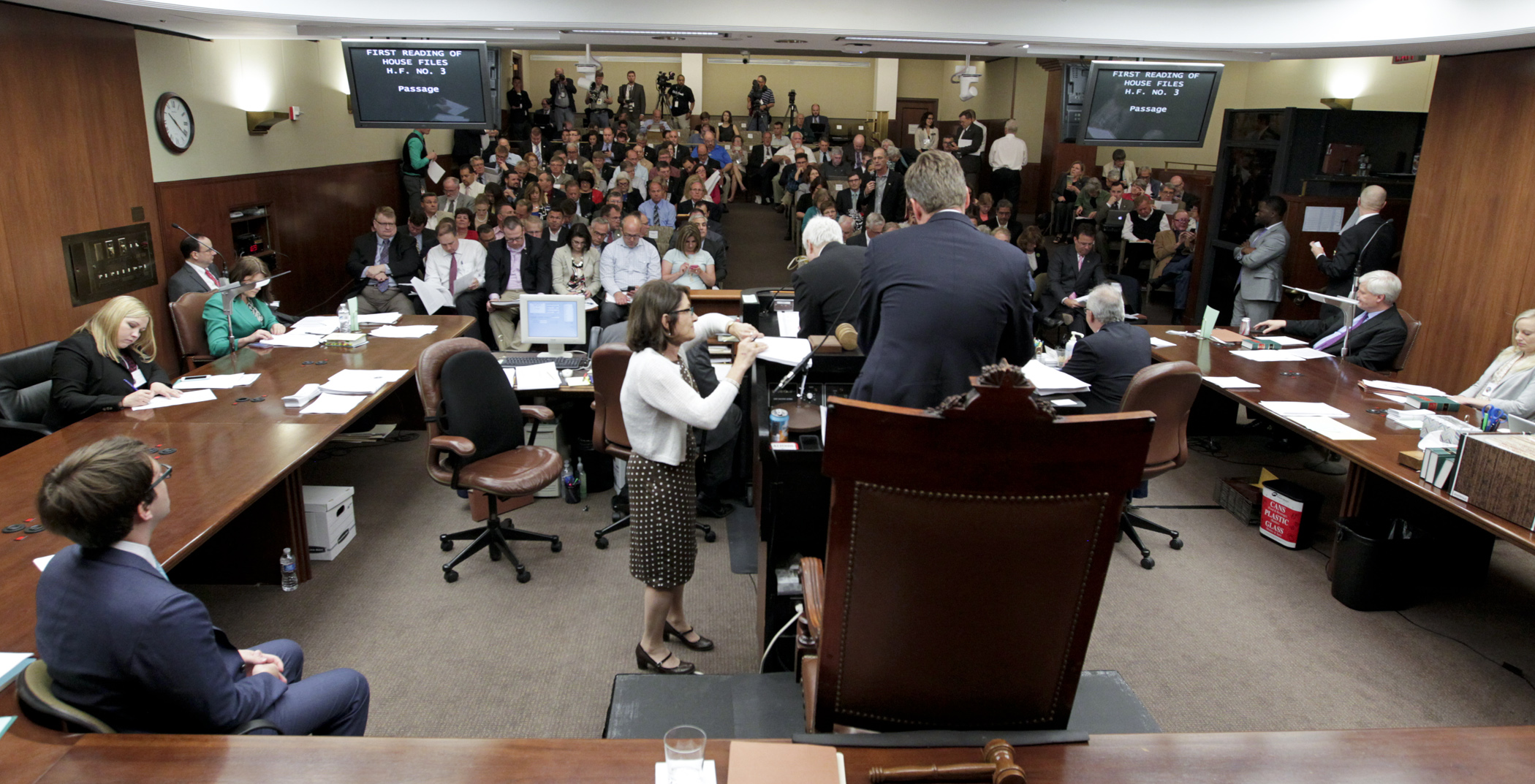 89th Legislature
89th Legislature
During the 2013-2017 capitol restoration project, in the June 2015 special session, the House Chamber was not available. The House met in special session in room 10 of the State Office Building.
See "Temporary House Chamber prepped for special session" in Session Daily a photo or the seating chart.
The image seen here of House members meeting for session in hearing room 10 of the State Office Building is copyrighted by Minnesota House of Representatives. Photo by Paul Battaglia.
Location: 100 Rev. Martin Luther King Jr. Boulevard
March 8, 2016 - May 23, 2016
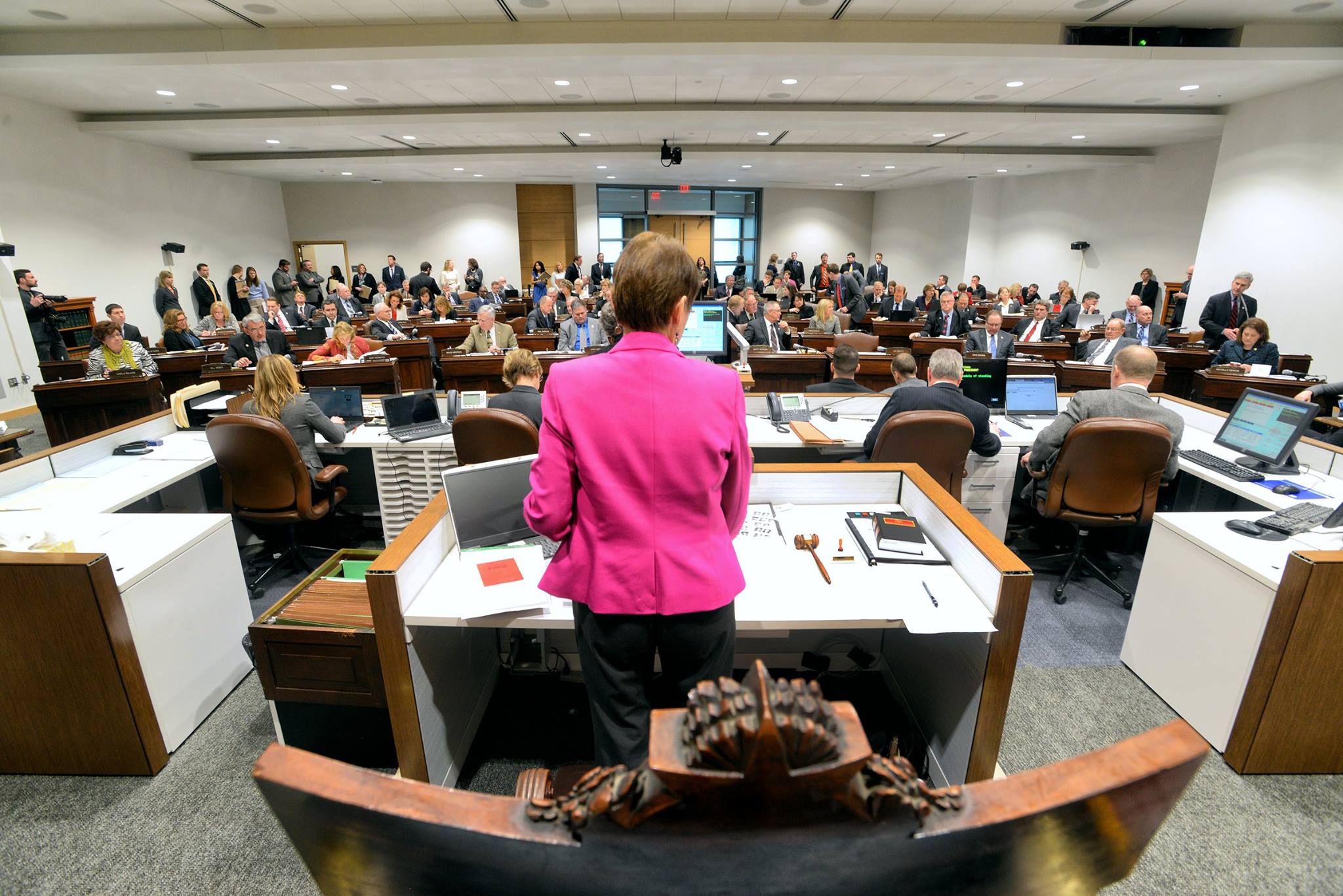 89th Legislature
89th Legislature
During the regular session in 2016, the House continued to meet in the capitol, even while the capitol was undergoing extensive renovations during the Capitol Restoration Project. However, the Senate chamber was closed in 2016 for session and Senators used a hearing room (room 1150) in the newly constructed Minnesota Senate Building.
See "Welcome Back, Minnesota Lawmakers: New Session Begins" by Rachel E. Stassen-Berger in the Pioneer Press on March 9, 2016 for a photo. A seating chart is also available.
The image seen here of Senators meeting for session in hearing room 1150 of the Minnesota Senate Building is copyrighted by the Minnesota Senate. Photo by David Oakes.
Locations: 75 Rev. Martin Luther King Jr. Boulevard; 95 University Ave. West
March 26, 2020 - April 20, 2020
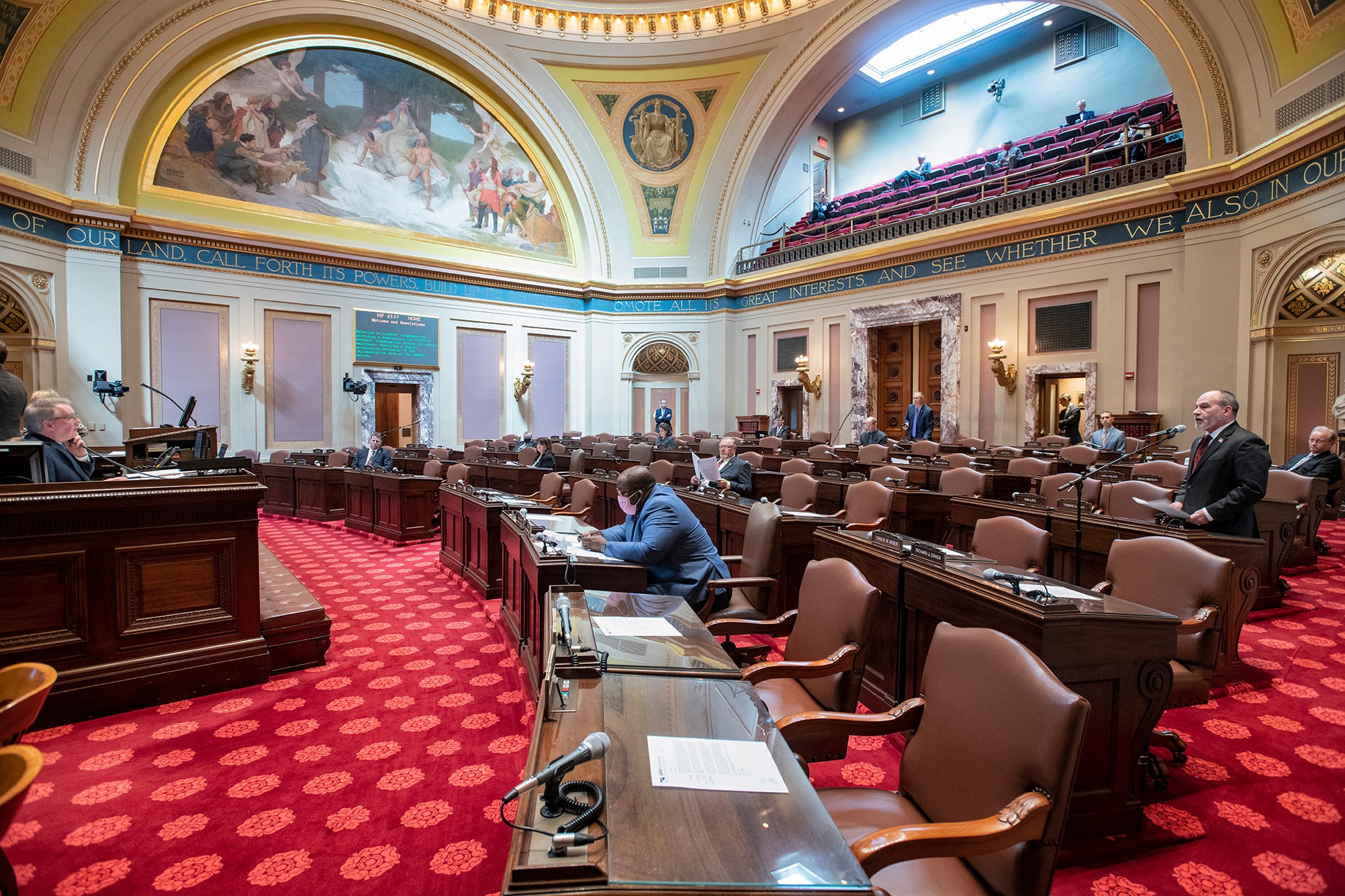 91st Legislature
91st Legislature
During the 2020 COVID-19 pandemic, when the custom was to limit the number of people gathered together in a room, the House and Senate operated with a combination of chamber seating, alternate location seating in rooms around the Capitol building, and members not physically on site, but voting remotely.
Each day varied so there is not a master seating chart for this time period. See "House, Senate plan to act on more COVID-19 proposals Thursday" from Session Daily for a photo of the House chamber.
The photo here of the Senate Chamber with members physically spaced apart is copyrighted by the Minnesota Senate. Photo by David Oakes.
Locations: 75 Rev. Martin Luther King Jr. Boulevard; 95 University Ave. West; 100 Rev. Martin Luther King Jr. Boulevard; Remotely
Sources:
"Building History." Minnesota Historical Society, n.d.
Cameron, Linda A. "Minnesota's First State Capitol." MNopedia, July 30, 2021.
Cameron, Linda A. "Minnesota's Second State Capitol." MNopedia, December 3, 2021.
Cameron, Linda A. "State Capitol Fire, 1881." MNopedia, December 2, 2021.
Davis, Don. "Gradual Emptying: State Capitol Renovation Closes More of Building." Forum News Service, July 5, 2014.
Dean, Hon. William B. A History of the Capitol Buildings of Minnesota, With Some Account of the Struggles for Their Location. St Paul: Minnesota Historical Society Collections, Volume 12, 1906.
"In Ashes. The State Capitol in St. Paul Burned Last Evening." The Minneapolis Tribune, March 2, 1881.
Lincoln, Elizabeth. "How Often Has the Legislature Met Outside the Capitol?" Library News, June 3, 2015.
Lincoln, Elizabeth, Molly Riley, Elaine Settergren. "Legislative Proceedings in Unusual Circumstances." Library News, April 8, 2020.
Martinson, Flora P. "Minnesota's Territorial Legislature." Gopher Historian, Winter 1956-7, p. 6-9.
Minnesota Legislative Manual, 1889, p. 246-250.
Pease, Brian C. "Minnesota's Third State Capitol." MNopedia, November 30, 2023.
Stassen-Berger, Rachel E. & Bill Salisbury. "How the Newly Restored State Capitol Came to Be." Brainerd Dispatch, August 7, 2017, p. 2.
Williams, J. Fletcher. A History of the City of St. Paul to 1875. St. Paul, Minnesota Historical Society Press, 1983.